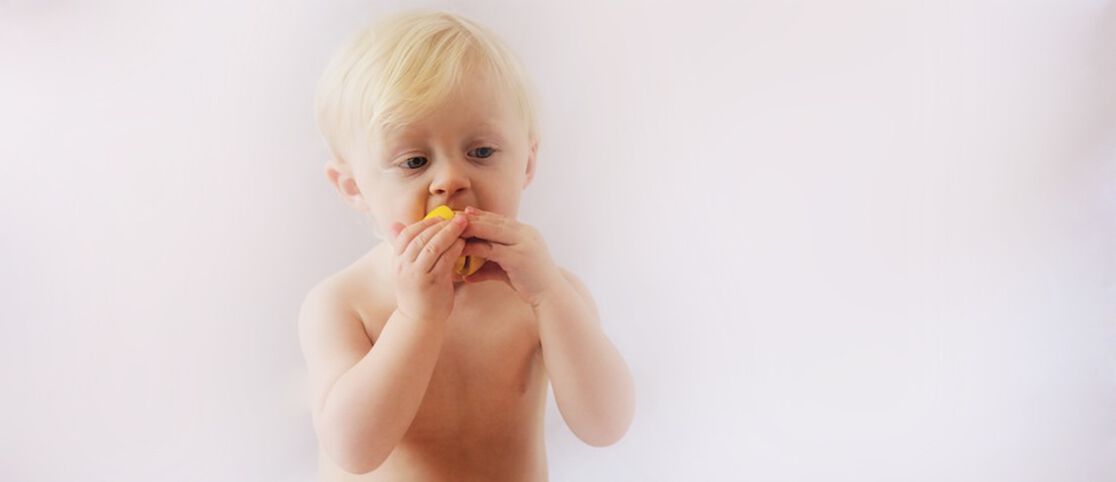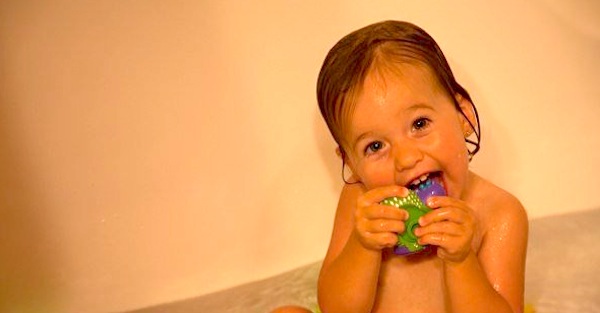I'm Isobel, a first-time mama to my 16-month-old little wild child named Holden. Ever since the arrival of my son, I have been on a journey to raise a child in a more natural, simple, and non-toxic environment within the context of a modern lifestyle.
Before Holden, I never thought about the safety of children's toys. And even after his arrival, my ideas on safety revolved mainly around potential choking hazards because those are the safety precautions the toy companies do warn you about. Like the majority of us, I expected that products specifically made for babies and young children would be safe. It wasn't until my son started putting anything and everything into his mouth that I began to wonder what exactly he was chewing on. So, I did a little research and this is what I found:
In December 2006, San Francisco enacted the first-in-the-nation ban, modeled after that in the European Union, prohibiting the sale, distribution, and manufacture of baby products containing any level of bisphenol A (BPA) and certain levels of phthalates (found in vinyl plastics). At that time, the San Francisco Chronicle sent 16 common toys to a lab in Chicago for testing, showing that many of these toys contained toxic phthalates at levels the exceeded the limits set in the new San Francisco law—some as many as 13 times higher. And while the FDA has since banned the use of BPA in baby bottles and sippy cups (a step in the right direction), it’s alarming and worrisome that these chemicals still find their way into toys.
Recently, Holden more than doubled his toy collection thanks to the generosity of family and friends this Christmas. Despite their best intentions, there a few additions that weren’t particularly safe. Most grandparents, aunts, uncles, and friends consider the entertainment value and age-appropriateness when selecting toys, unaware of the dangers of certain plastics and lead in toys that may leach out when they are sucked or chewed (just like I originally assumed that toys marketed to young children were safe).
Instead of unpacking everything and tossing it into his toy bin, I decided to sort through both old and new toys with my knowledge of BPA and phthalates in mind to purge the potentially toxic or unsafe ones. It can seem impossible to tell which toys are harmful, so here are a few guidelines to keep your toy collection safe.
1. Toss the plastic. Vinyl plastic toys are some of the worst offenders when it comes to the health of your child and the planet. Vinyl (also known as PVC) is commonly used in teethers and soft squeeze toys like rubber duckies. It’s toxic and made with chemicals like lead and phthalates, which have been linked to cancer, kidney and liver damage, harm to developing reproductive organs, and premature breast development in girls. Inhaling these chemicals can also worsen asthma in children. (Learn more about the dangers of Vinyl from Healthy Child Healthy World here). Here’s one tip for choosing safer plastics: Look for toys labeled 1,2, 4, or 5 in the symbol usually found at the bottom of the product.
2. Choose natural materials, especially wood. Look for wood, plush, or soft toys made from natural and organic materials when finding safe options for your little ones. Unfinished, solid wood is the safest for children and is healthier for the environment in life cycle terms. The best woods are certified sustainably produced hardwoods. Try to avoid pressed woods, which are formed with glues that give off toxic fumes. Also, be aware of paints and finishes on wood. Read labels or the box to ensure that non-toxic paints, stains, or other finishes were used.
3. Avoid Metal Jewelry. Lead isn’t only a paint problem—it’s also found in jewelry, particularly the inexpensive kind. HealthyStuff.org found that more than 50% of the jewelry it tested contained chemicals like cadmium and lead. This goes for jewelry made for both children and adults. As mothers we know that our jewelry often is our child's favorite toy, and this is something of concern particularly because jewelry sold to adults is not required to meet safety standards. As a great alternative, check out amber teething necklaces for mom and baby.
Do you have any other tips for finding safe toys for your kids?
~ Isobel Benesch of holdenonbaby
We aim to provide you with the most honest and credible information possible. This article was reviewed for accuracy by The Honest Team and was written based on sources that are linked at the bottom of the article.
blog_review_statement




